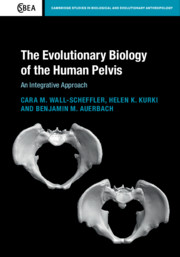Book contents
- The Evolutionary Biology of the Human Pelvis
- Cambridge Studies in Biological and Evolutionary Anthropology
- The Evolutionary Biology of the Human Pelvis
- Copyright page
- Dedication
- Contents
- Preface
- Introduction
- 1 Pelvis Anatomy
- 2 Functional Morphology of the Pelvis
- 3 Pelves of the Hominin Lineage
- 4 Developmental Biology of the Pelvis
- 5 Morphological Integration, Evolutionary Processes and Variation in the Human Pelvis
- Conclusions
- Appendix
- Works Cited
- Index
4 - Developmental Biology of the Pelvis
Published online by Cambridge University Press: 30 December 2019
- The Evolutionary Biology of the Human Pelvis
- Cambridge Studies in Biological and Evolutionary Anthropology
- The Evolutionary Biology of the Human Pelvis
- Copyright page
- Dedication
- Contents
- Preface
- Introduction
- 1 Pelvis Anatomy
- 2 Functional Morphology of the Pelvis
- 3 Pelves of the Hominin Lineage
- 4 Developmental Biology of the Pelvis
- 5 Morphological Integration, Evolutionary Processes and Variation in the Human Pelvis
- Conclusions
- Appendix
- Works Cited
- Index
Summary
To investigate pelvis evolution and to understand the sources of its variation, we must comprehend its development. We review developmental processes that form the pelvis from three perspectives: cell layers and tissues, genomic information and overall growth. At tissue level, the pelvis forms largely from lateral plate mesoderm as well as from somites. The os coxa forms from cartilaginous precursor tissues that grow and ossify, especially in two major regions that become the ischiopubis and the ilium. The sacrum and coccyx form from multiple ossification centres. Numerous secondary ossification centres form, with the last fusing by the mid-twenties. The importance of multiple genes and molecular factors are discussed, including interactions among and differences in timing and locations of expression, emphasising Islet1, Emx2, Pbx and Hox. We review the importance of differences in timing of ossification among skeletal elements, their interactions with mechanical loading and sex hormones, and environmental factors affecting individual growth. These processes are linked to morphological integration and are the origins of the morphological variation on which evolutionary forces act.
- Type
- Chapter
- Information
- The Evolutionary Biology of the Human PelvisAn Integrative Approach, pp. 99 - 110Publisher: Cambridge University PressPrint publication year: 2020

